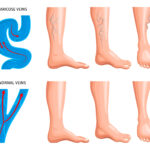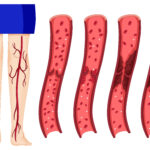A surgical procedure that is designed to address uterine fibroids is known as uterine myomectomy. Uterine myomectomy is also commonly known as myomas or leiomyomas. Fibroids, the noncancerous growths, can cause a range of symptoms like pelvic pain, heavy menstrual bleeding, and even issues related to fertility. Women desiring to protect both their uterus and fertility often choose myomectomy as their preferred option.
Uterine Myomectomy Procedure
These are noncancerous growths that may form in the muscular wall of the uterus. The size and number of uterine fibroids can vary, and so do the symptoms they cause. To cure these symptoms and surgically remove the uterine fibroids, three different approaches of uterine myomectomy may be followed, depending on the size, number, and location of the fibroids.
Abdominal Myomectomy
The first approach to myomectomy is the abdominal myomectomy. This is particularly effective for larger fibroids deeply entrenched in the uterine wall. Under this procedure, a horizontal or vertical incision is made in the abdomen to reach and remove the fibroids. This type of myomectomy may require longer recovery than the other type.
Laparoscopic Myomectomy
Secondly, a minimally invasive technique involving a small incision through specialized equipment and a laparoscope is known as the laparoscopic myomectomy. This approach is associated with reduced scarring and a shorter recovery time. This type of myomectomy is best for smaller fibroids and patients who prefer a less invasive option.
Hysteroscopic Myomectomy
Fibroids that protrude into the uterine cavity can efficiently be removed by hysteroscopic myomectomy. A thin hysteroscope is inserted via the patient’s vagina and cervix to assist in the removal of uterine fibroids without any external incision. Furthermore, this procedure is usually performed outpatient, and the recovery time is very short.
Alternate to Myomectomy
Uterine Fibroid Embolization (UFE) is a non-surgical alternative to myomectomy. Under such a procedure, blood supply is blocked and restricted from reaching the fibroid, causing it to shrink. This less invasive method may be suitable for only a few patients. Whether to undergo myomectomy or UFE depends on factors like size, location, and number of fibroids present, and the patient’s reproductive goals.
Uterine myomectomy is a valuable option for women experiencing symptoms related to uterine fibroids, offering the potential to preserve fertility and the uterus. Grasping available alternatives is vital for patients to make informed decisions that align with their needs.




